August 25 – October 25, 2025
Opening: August 21, 2025, at 7 PM
Gallery opening hours: Thursday – Saturday, 11 AM – 7 PM
Recommended time to view the exhibition: 2 hours
Feminism continues to face both explicit rejection (“we’re all equal already”) and structural obstacles. In many respects the objective of the struggle of the second wave is still yet to be achieved. The female voice remains marginalised in key positions, the female body is subjected to surveillance, reproductive rights are restricted and care is overlooked as something self-evident. Emotions are disparaged, vulnerability mistaken for weakness.
“Woman must write her self: must write about women and bring women to writing, from which they have been driven away…” wrote Hélène Cixous in her text The Laugh of the Medusa from 1975.
The exhibition Echoes of the Medusa presents a curated selection of audiovisual works by artists from Central and Eastern Europe, who use the medium of video to articulate bodily experience, sensitivity and a voice that has been repeatedly suppressed, mocked or demonised throughout the course of history. The works presented follow on from the concept of écriture féminine (feminine writing) as it was formed within the French thought of the 1970s. Instead of accentuating objectifying distance or a traditional narrative, here physicality, emotive force and subjective, frequently bruising experience come to the forefront. This approach cannot be limited only to literature, but resonates also in contemporary visual formats.
The authors of the videos articulate their stances, as well as their pains and joys, not through a description or commentary but rather by means of image, gesture, repetition or irony. Their bodies become bearers of memory and instruments of resistance. The camera here functions not as a mere device for recording, but as an active participant in a dialogue with oneself, with the expectations of society and one’s own family history.
The artists repeatedly return to motifs that have historically been instrumentalised against the female subject such as flowers, home, motherhood and sexuality. However, in the hands of the artists these symbols become instruments of transformation, appropriation or destruction. The Medusa here appears not only as a literary metaphor, but also as reference to a misunderstood mythical figure with an ambiguous legacy as an embodiment of horror and power, which can both paralyse and liberate with her gaze alone. Her laughter is an act of revolt, an explosion that disrupts norms and opens up a space for an autonomous female voice. A voice that does not fear to laugh, scream or remain silent – of its own volition.
Like Hélène Cixous, whose text provided the initial inspiration, we regard subjectivity as multilayered and mutable. In her exhortation to write “her self” Cixous at the same time disrupts the notion of the uniform female subject. She speaks of bisexuality not as a sexual orientation but rather as an internal multiplicity, a dual expression open to a variety of voices and experiences. This approach can be conceived as a forerunner of today’s non-binary thought, which rejects fixed identity. Creativity here is not the result of adaptation, but a flow which is shared, versatile and open.
The exhibition does not only present a collection of videos, but also formulates a collective call for female expression which refuses to be shaped by external demands. The selection of works was created through the eyes of the generation born in the 1990s. Personal and generational experience thus naturally forms a sensitivity to themes of identity, physicality and social norms. The curatorial selection here reflects not only aesthetic and political preferences, but also the means by which female bodies and voices were represented during the time when this generation was in its adolescence.
Each of the artists brings her own “Laugh of the Medusa”. A laugh that is not mockery but rather a return of a voice, a language and a perspective. It is a gesture of liberation, not attack. It does not intend to induce fear, but calls for attentive listening.
Artists: Daniela Baráčková, Pavla Dundálková, Valentýna Janů, Eva Jiřička, Barbora Katuščáková, Simona Koutná, Markéta Magidová, Šárka Mikešová, Michaela Mildorfová, Ladis Pelikánová, Petra Pětiletá, Tereza Severová, Zsuzsi Simon, Sláva Sobotovičová, Karoline Strys, Marie Tučková, Psychedelic Choir (Zorka Wollny), Zuzana Žabková
Curatorial conception: Anežka Januschka Kořínková, Pamela
Exhibition architecture: Dita Lešovská
Production and management: Karin Akai
PR: Nika Schnitzerová
Graphic design: Bohumil Vašák
FILM SECTION
Karoline Strys (PL) – I am not here
2020, 6:12
I am not here is a solo work inspired by an artistic residency within the project Let’s Make Noise Sisters, a collaborative series of performances and installations created in response to the restriction of women’s rights in Poland.
Eva Jiřička (CZ) – Jízda (The Ride)
2004, 2:54
loaned from the National Film Archive
The performance The Ride, in which Eva Jiřička drives naked through the streets of Prague in an open-top sports car, blurs the boundaries between the public and private space and thematises the gaze itself. The film begins inside a garage plastered with posters of naked women, to which the artist responds with a curious smile, as she does to the gleaming car.
Petra Pětiletá (CZ) – ALL WAM
2009, 3:40
All wam is a montage of videos from the area of the porn industry of the same name, in which Petra Pětiletá has found an exceptional visual quality.
Valentýna Janů (CZ) – Is Your Blue the Same As Mine?
2018, 11:40
A girl keeps you company from the screen in an otherwise almost empty space, her presence at the same time accompanied by a chaotic narration of decisions, solitude and love. The unreliable narrator offers a possibility of identifying with a narrative that is just as confusing and variable as the girl’s changing role within it.
Pavla Dundálková (CZ) – Přibližně hodinu (Almost an Hour)
2015, 2:58
The video Almost an Hour thematises a moment of alienation and misunderstanding between people inhabiting the same space. It portrays an endeavour to conserve a moment of happiness and discomfort. The video is accompanied by a voiceover that counts the seconds in an hour, like counting pebbles during the erosion of a rock face. The counting up to the hour becomes confused and tangled as ideas about what might have gone wrong elude us, and each second leads to another end.
Tereza Severová (CZ) – Procházka/návštěva/přednáška (Walk/Visit/Lecture)
2011, 3:10
This collection of videos conveys personal experiences and emotions through three mundane situations. An ordinary day is filled with minor tasks that require planning and the ability to respond to changes. Everything proceeds as it should, some diary entries are deleted and others added until the moment when plans begin to overlap and rewrite themselves, giving rise to an error.
Barbora Katuščáková (SK) – lucky slowatch
2024, 3:00
This project stems from the experiences of a young person witnessing the degeneration of political culture and the fragility of democracy in her homeland. It responds to the rapid increase in the misuse of national symbols and ideals spread by the present government, and also highlights the fact that public displays of machismo are still prevalent and socially normalised.
Psychedelic Choir (PL) – Oh, Brothers!
2020, 3:52
This vocal performance by Zorka Wollny and the Psychedelic Choir presents an appeal to men. This petition on behalf of women calls for equality, closeness and a shared world. Through the power of the voice it opens up a space for change in relationships and social structures.
Simona Koutná (CZ) – My Surrogate Self, act II (Girly-Girls and Sexy-Bitches running the world through a pink mirror, dreaming about things that I understand)
2022, 9:44
This montage film is a collage-type recycling of found moving pictures, by means of which it deconstructs the socially displayed construction of the female image. It juxtaposes contemporary pop culture, its reflection in an endless stream of amateur videos where its language and gestures are adopted by the actors themselves, and at the same time its prototype in the form of archetypes sustained by folk tradition.
Zuzana Žabková (SK) – FEMME T’AFFALE
2010, 6:00
The controversy of looking. A utopia of fatefulness? The position of the narrator’s head and her gestures are stylised so as to reflect both present and past stereotypical conceptions of beauty, sensuality, passion and destiny in a single moment.
Ladis Pelikánová (CZ) – Vlhko (Wetness)
2012, 2:04
The camera records in detail the artist’s made-up mouth, in which she repeatedly licks her lips while a white fluid gradually seeps out. The striking visual and audio repetition creates a tension between sensuality, revulsion and anticipation. The work is situated on the boundary of the grotesque, the erotic and physical residue, thematising language, female physicality and the meanings we attribute to “wetness” in various contexts.
Michaela Mildorfová (CZ) – Květiny (Flowers)
2013, 1:00
This destruction of flowers in a cutout of a domestic environment, in which the protagonists themselves have chosen the types of flowers they were given within their relationships, therefore functions as a “psychotherapeutic” means of dealing with a failed relationship.
Marie Tučková (CZ) – I think you’re funny
2017, 06:32
Four women dressed in jumpsuits exercise within the sexless space of a white cube. Their performance is accompanied by a voice with an emotive text about virtuality, cyclicality and the desire for authentic contact. The ending, featuring a folk song, functions as an absurd catharsis of emptiness.
Sláva Sobotovičová (SK) – Den poté (Sobota) / The Day After (Saturday)
2005, 4:04, PAL
Young women in a kitchen sing a ballad of tragic love, while doing their domestic work. The song stops and then starts again. The men watch the whole proceedings from a distance.
Daniela Baráčková, Markéta Magidová and Šárka Mikešová Telecká (CZ) – MYSLELA JSEM SI, ŽE MÁM PO TOBĚ MRTVICI (I THOUGHT YOU’D GIVEN ME A STROKE)
2012, 2:40
The artists, who are also the performers in this video, create an image of their fathers by means of fragments of from sentences or speeches that have become certain formative boundaries, from which one has to break out repeatedly and painfully in order to find one’s identity. With a certain degree of hyperbole, the artists attempt to uncover the self-construct through perception of the other.
SEPARATELY OUTSIDE OF THE FILM SECTION:
Zsuzsi Simon (HU) – And yet we still keep on living…
2025, 44:04
In the video And yet we still keep on living… Zsuzsi Simon interconnects three generations of women (herself, her mother and her grandmother) in an image that relates to everyday work, the body and the memory. A simple broom here functions as a reference to both domestic rituals and witchcraft, and opens up a space for sharing silent intergenerational traumas.
The project is realised with the financial support of the Capital City of Prague, the Prague 3 Municipal District, the Ministry of Culture and the State Culture Fund of the Czech Republic. Thank you for your support.
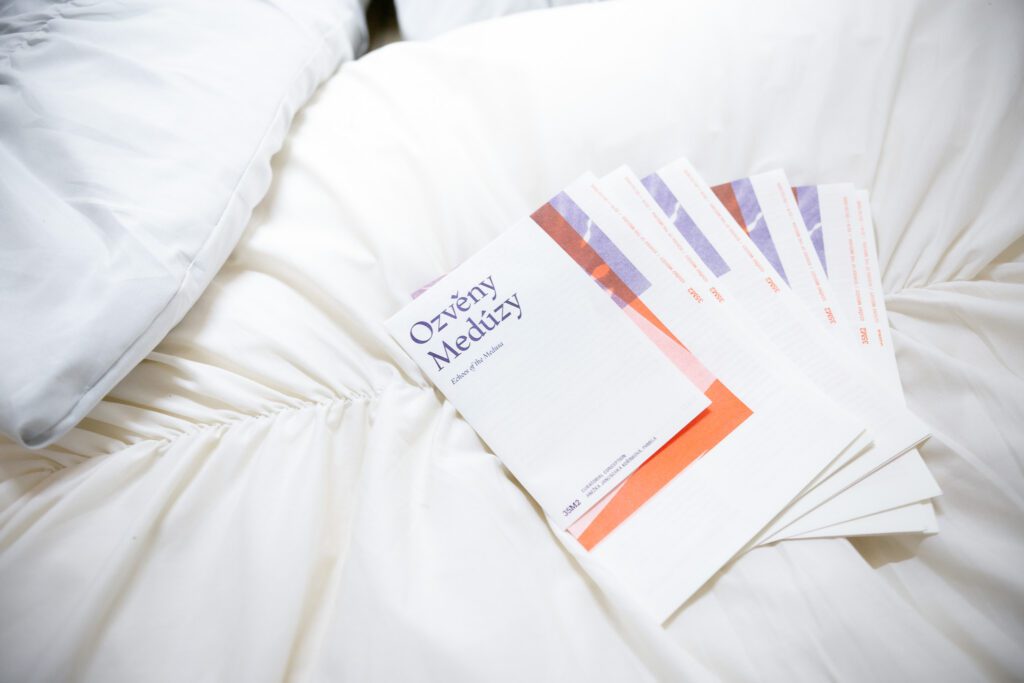
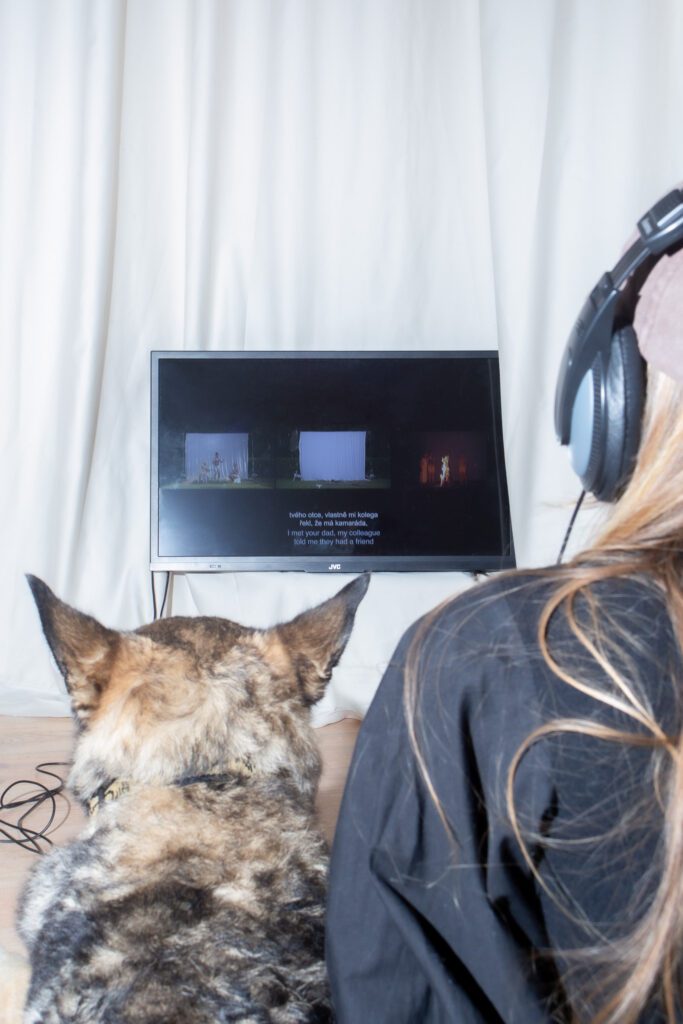
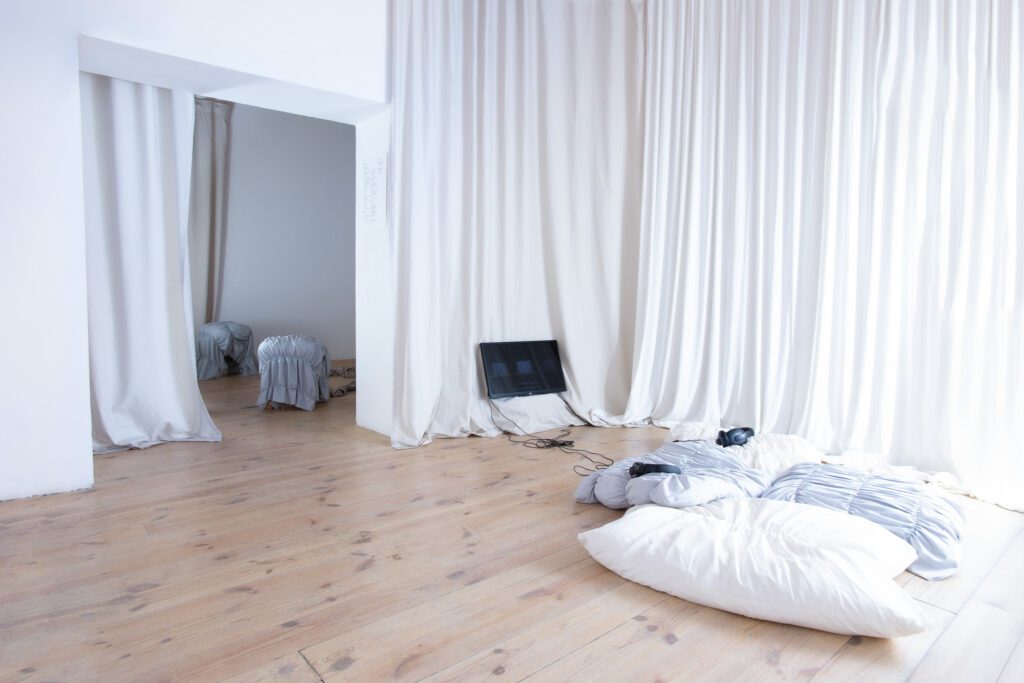
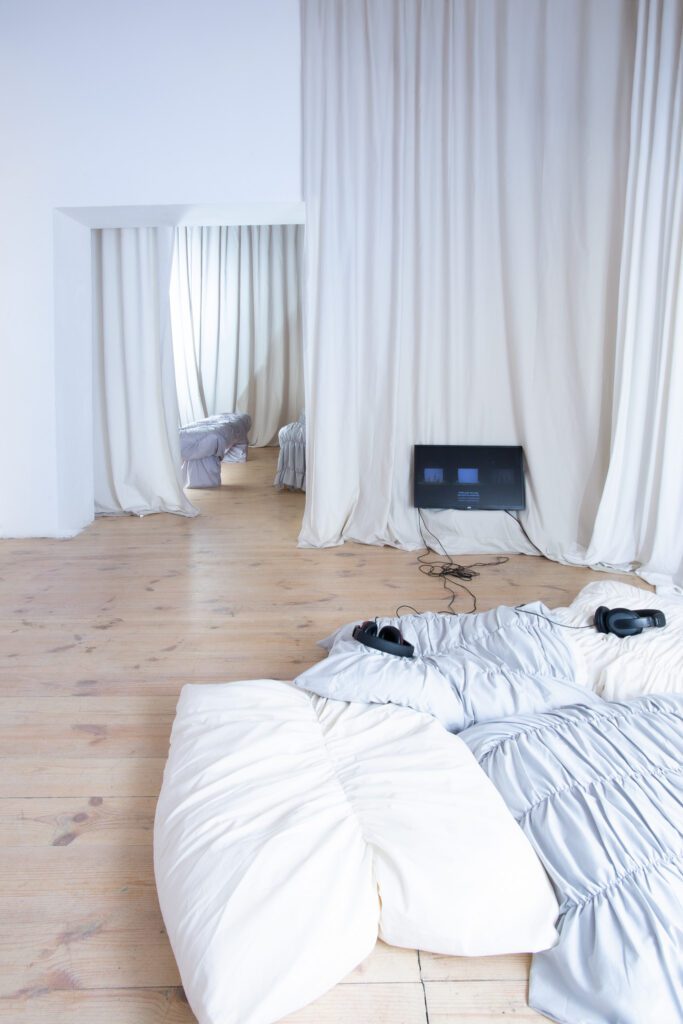
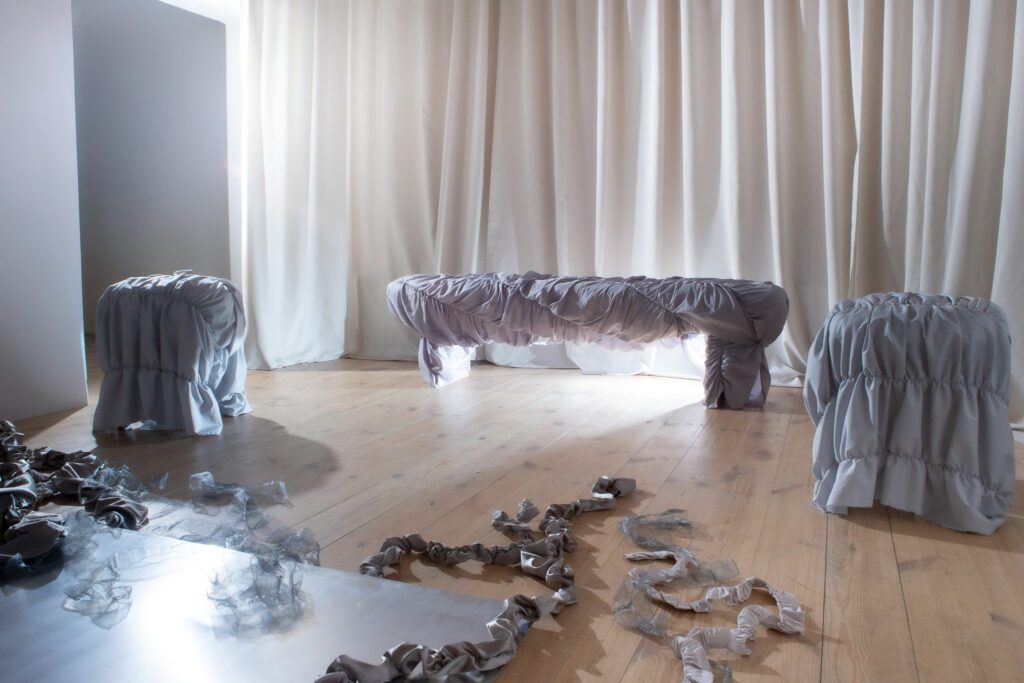
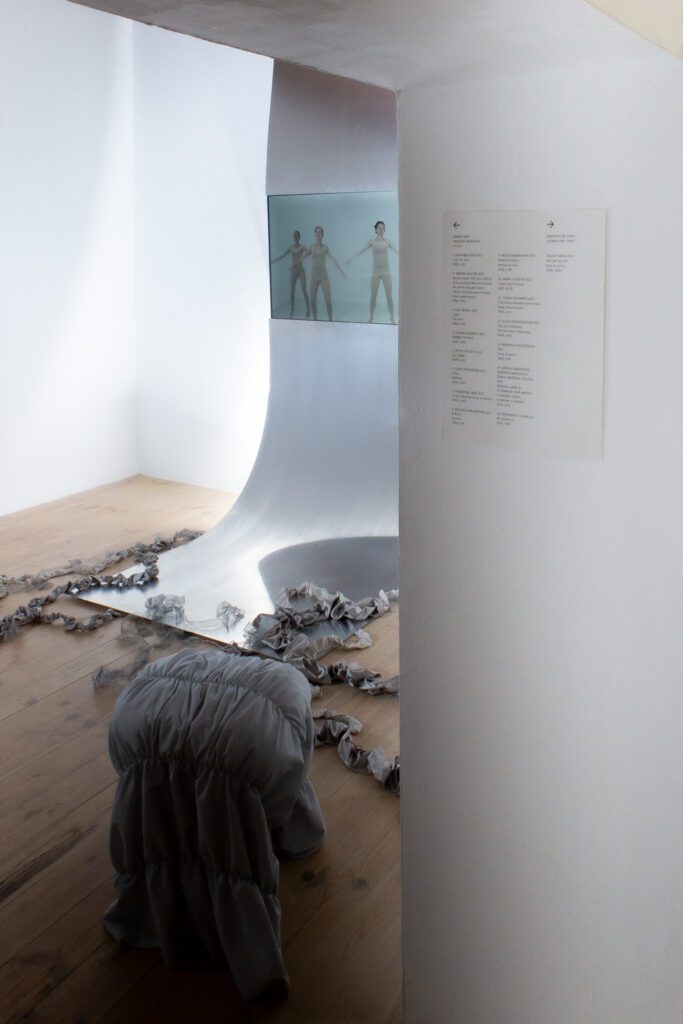
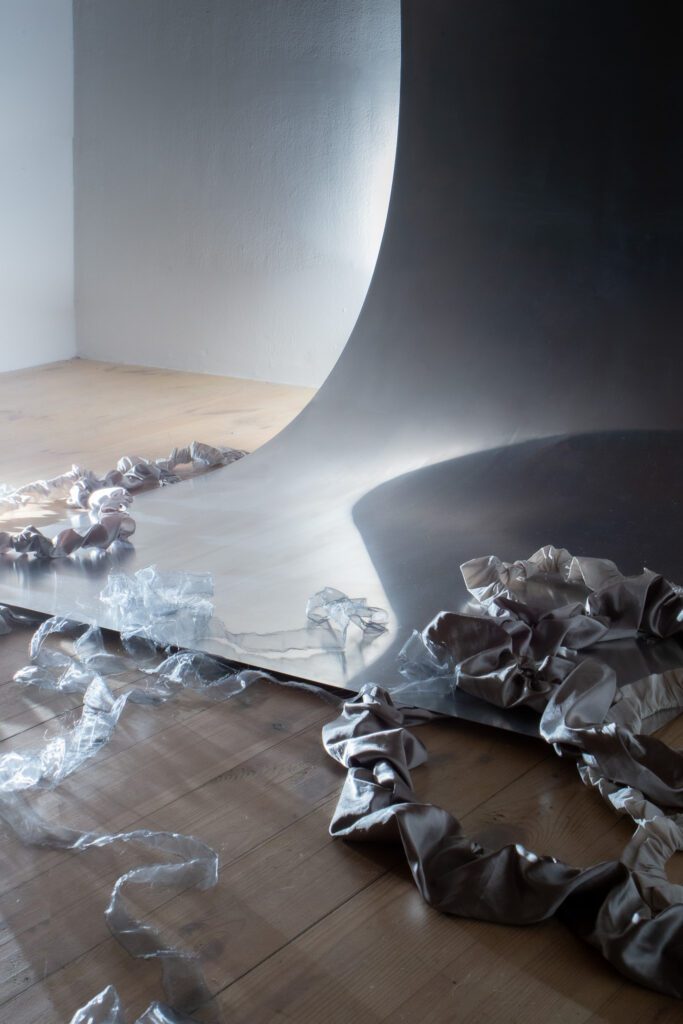
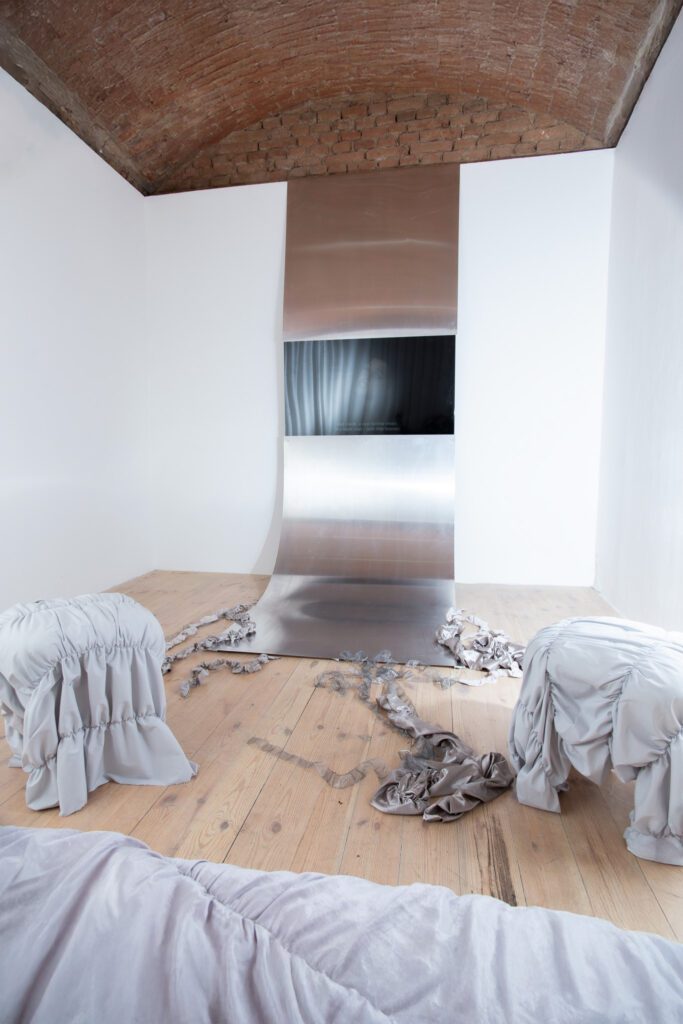
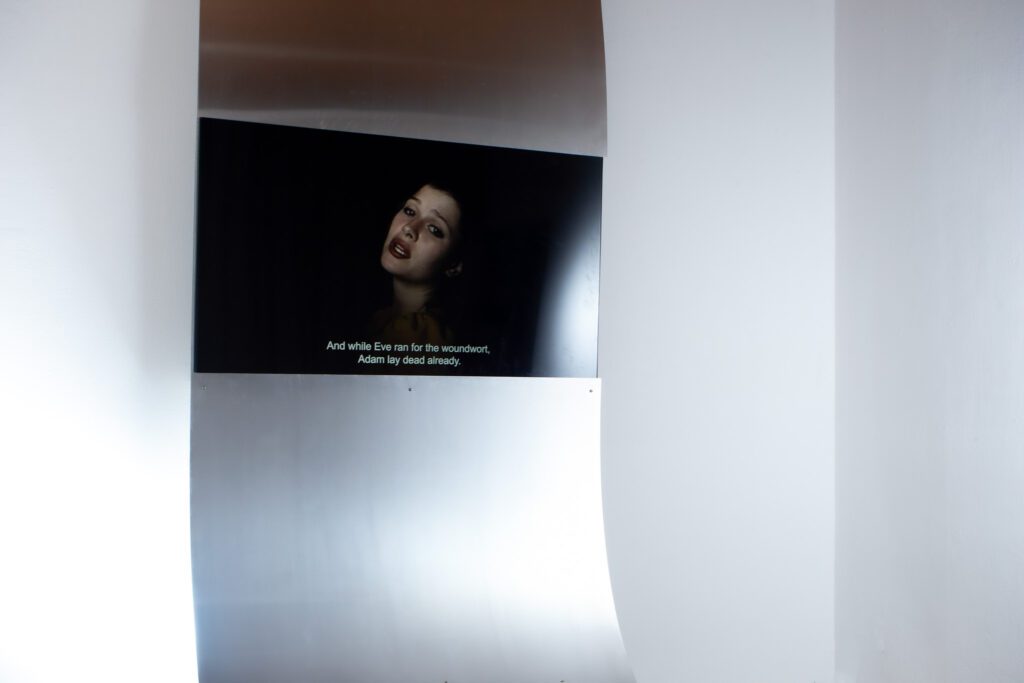
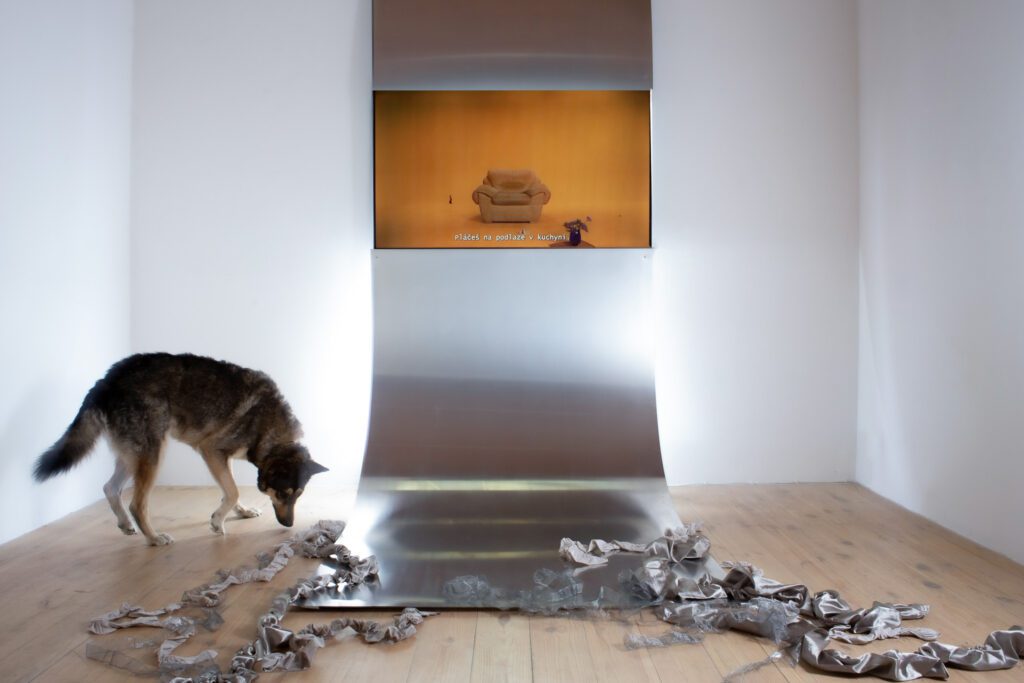
📸 Kristína Opálková